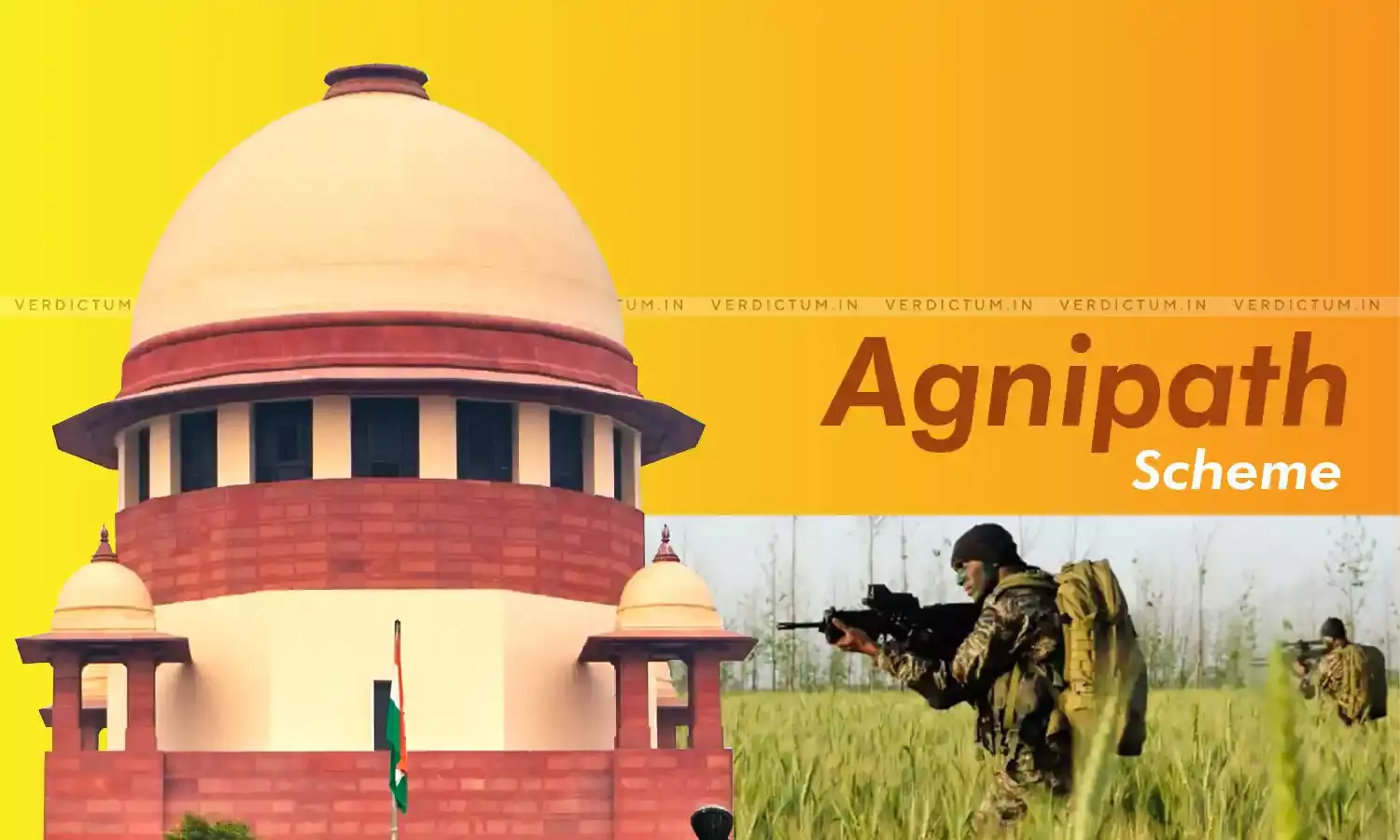Supreme Court Clubs and Transfers Matter Challenging Agnipath Scheme To Delhi High Court

The Supreme Court today transferred a batch of petitions challenging and seeking direction regarding the Agnipath Recruitment Scheme to the Delhi High Court. The Court has also directed that all the matters that have been filed in the different High Courts of the country may also be transferred to the Delhi High Court.
The Bench comprising of Justice D. Y. Chandrachud, Justice Surya Kant and Justice A. S. Bopanna passed the order.
Solicitor General Tushar Mehta submitted that there are matters filed in various High Courts. Advocate Kumud Lata Das, Advocate M. L. Sharma and Senior Advocate V. K. Shukla opposed the suggestion of the Court that the matters be transferred to the Delhi High Court and requested that all the matters be transferred to the Supreme Court instead.
The Supreme Court while dictating the order stated that, "Cases have been filed in different High Courts. The Solicitor General has placed on record a consolidated chart of the High Courts in which Writ Petitions have been filed. The High Courts in which Writ Petitions have been filed are Delhi, Kerala, Patna, Punjab & Haryana and Uttarakhand. In our view multiplicity of cases being heard across courts is neither desired nor proper." The Court then directed the Judicial Registrar to transfer the batch of matters to the Delhi High Court.
The Court went on to direct that the copy of the order shall be given to all the High Courts and the High Court shall keep an option open to the parties to either transfer the matter to the Delhi High Court or to keep the matter pending before the Court and allow the parties to intervene in the matter before the Delhi High Court.
A batch of petitions have been filed in the Supreme Court challenging the Agnipath Scheme of the Central Government and raises various concerns about the radical recruitment plan of the Armed Forces under the scheme. The announcement of the scheme led to nationwide violent protests due to the short term tenure of the Agniveers and the future uncertainties after the tenure was over.
Agnipath Scheme was implemented by the Government keeping in mind the twin objectives of a more youthful military and economizing the pension pay-outs. The issue faced by the people with the Agnipath Scheme was that at the end of the tenure 25% of the Agniveers would be absorbed by the forces and the remaining were to be retired without pension and would be without a job. The scheme proposed that the demobilized Agniveers would receive Rs. 11.71 lakh as a tax severance package under the Seva Nidhi Scheme and that a customised monthly package along with Risk and Hardship Allowance as applicable in the three services would also be given.

